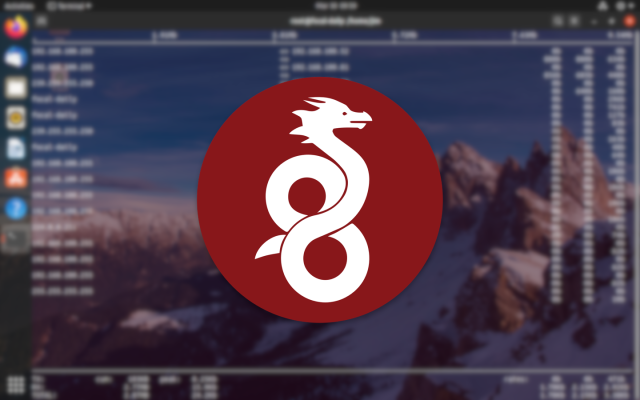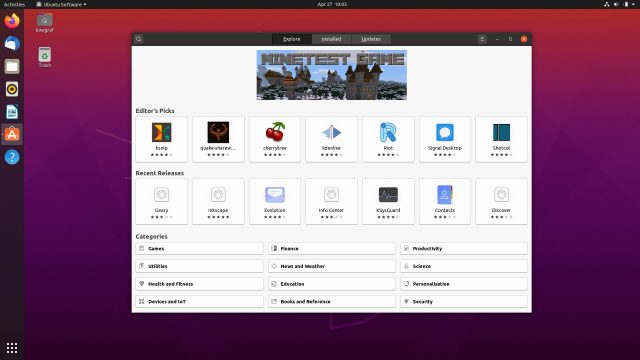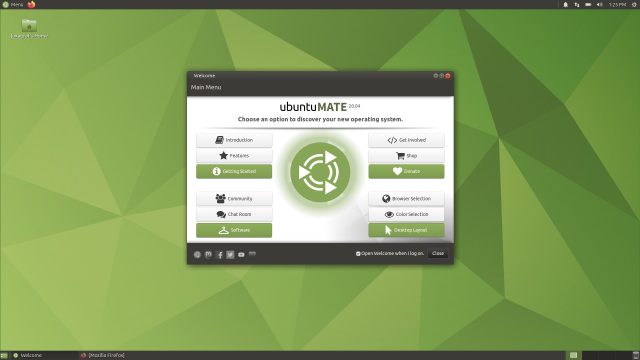This is most definitely the strangest spring in a very long time, with all sorts of event and hardware delays or outright cancellations. But one thing that has arrived right on schedule? The latest version of Ubuntu Linux.
Ubuntu 20.04 (Focal Fossa, as this release is known) is a Long Term Support (LTS) release, which means Ubuntu's parent company, Canonical, will provide support through 2025. The LTS releases are what Canonical calls "enterprise grade," and these tend to be conservative when it comes to adopting new technologies. The interim releases, like last year's Ubuntu 19.10, are instead where the company tends to experiment. Perhaps not surprisingly, Canonical estimates that 95 percent of all Ubuntu installations are LTS releases. Which is to say, this is a big update that the bulk of Ubuntu's user base will be upgrading to eventually.
The good news for Ubuntu fans is that 20.04 has been a fantastic release in our testing. This update has been very solid in day-to-day use, and it still manages to (optionally!) include support for some cutting-edge new features, like the beginnings of a tool to manage ZFS snapshots. There's also a major kernel bump, and considerable work has gone into improving and polishing the default Yaru theme.
That's a running theme in Ubuntu, where much of what makes it great are small changes and new features that individually might not be remarkable but all together create a system that is fast, stable, and hard to beat. The security improvements offered this time around almost alone make Ubuntu 20.04 a must-have upgrade.
But the Ubuntu 20.04 update has plenty of new stuff for all the various Ubuntu flavors as well. So even if the default GNOME desktop doesn't excite you, there's big news in Kubuntu, Lubuntu, Ubuntu Mate, and more. There's also some good news for Raspberry Pi users, who get first-class support for the Pi 4 platform out of the box (and when I say first class, I mean, frankly, better than the official Pi distro, Raspian).

ZFS, kernel, and more
Often, first impressions on any Linux release start with the visual and desktop changes. This time around, however, what's really impressive isn't necessarily the things you see; it's the things that are working behind the scenes to make your computing faster, easier, and more secure.
Ubuntu 20.04 ships with 5.4 kernel, which brings support for Intel's Comet Lake chips as well as the beginning of Tiger Lake support. If you keep track of the kernels, you might be disappointed, since the baked-in support for Wireguard in the kernel doesn't come until 5.6. But fear not VPN users: Ubuntu has backported the Wireguard bits so that you can enjoy using Wireguard with your VPN provider today (assuming your VPN supports it).
More exciting, quite frankly, is the continued work on integrating ZFS into Ubuntu. There's nothing new about the usefulness of ZFS, but usefulness is not necessarily the same as usability. Ubuntu's developers have put a lot of work into making ZFS easier to use, both in terms of making backups via snapshots and the arguably more important part of easily restoring your system using those snapshots.
New ZFS features in this release include zfs 0.8, which supports hardware accelerated encryption and some performance gains among other things. But the more interesting addition is Ubuntu's Zsys utility, which essentially makes it easier to see what's happening under the hood.
This is still highly experimental, and it's hidden away during the install process, but if you click the advanced features section of the disk partitioning tool during installation you'll see an option "EXPERIMENTAL: erase disk and use ZFS." It's no longer in scary bold red text the way it was in 19.10, which I take to mean that things are improving. Do note, however, this message still appears in all caps. This option is definitely not what you want to use on a production system looking for LTS-style stability.
When installing the daily beta of Focal Fossa, Advanced Features still offers ZFS installation—but still brands it "experimental." Jim Salter The ZFS installer layout spans four partitions: one primary partition used for UEFI boot, and three logical partitions used for swap, boot pool, and root pool. Jim Salter Now that we've picked the ZFS installer and stuck to our guns about it, we're off to the races. Jim Salter A quick apt-policy check shows us that zsys 0.4.1 is installed, and there are no ZFS snapshots on our system yet. Jim Salter We tried installing a second package immediately after Gimp and didn't see any new snapshots. A peek at /usr/zlib/zsys-system-autosnapshot shows us why. Jim Salter Note the highlighted text. After the 20-minute minimum interval expires (or you remove or decrease the interval), a sharp eye can spot zsys-system-autosnapshot getting called before installing a new package. Jim Salter Now we can see both the snapshots taken prior to installing gimp and the new set taken prior to installing mbuffer. Jim Salter We can also see what snapshots the system has taken for us with the zsysctl show command. Jim Salter Zsys is still very early in development and is missing some critical features. Notice there's a "save" but no corresponding "load"! Jim Salter
In testing, I have been using it since it debuted in 19.10 and have not had any issues. That said, I also, until the 20.04 beta rolled around, have not done much with it. My fellow Ars Technica writer Jim Salter took an in-depth look at Zsys and what you can (and can't) do with it that's well worth reading. The short story is that right now it's all on the command line and a little bit technical for the average user, but it's not hard to see how this tool could be expanded down the road, given a GUI, and turned into a dead-simple, rock-solid backup system.
If you're not familiar with ZFS you may be wondering why you should care, there are, after all, plenty of ways to back up your data. The advantage of ZFS is that rolling back your system becomes incredibly simple. Suppose you have your disk formatted with ZFS and snapshots are enabled. You install a new application and some key part of your workflow breaks. No problem: without you doing anything, ZFS has already made a backup of the system when you install that new app. All you need to do is reboot to grub and select the image to boot from.
This is possible right now in Ubuntu 20.04 (and any system with ZFS install), it just lacks user interface polish. It's not hard to see, though, that if Canonical can build out a nice GUI for interacting and managing ZFS, it's going to be a huge selling point.
To be absolutely clear, what's new here is not ZFS snapshots. Those have been around in some form for a decade. What Canonical brings to the table is the Zsys management tool and a solid background in producing GUIs that make tools like ZFS more accessible for users.
Beyond the ZFS additions, Ubuntu 20.04 sees a few other noteworthy changes, including moving the Ubuntu Software app to a snap package, rather than the repository version. This means developers will be able to push out updates to Ubuntu Software more quickly. The Store itself has been slightly redesigned and looks a little cleaner and easier to navigate. For the most part users probably won't even notice that the Store itself is now a snap install, but there is one gotcha: if you want to install Flatpak apps (for example, from Flathub), you'll need to install the Store from the repositories since the snap version of Ubuntu Software does not include the Flatpak plugin.
Other changes in this release include major updates for all the usual suspects, both desktop apps and included tools like ruby and python. And note that the system Python is now at 3.8. Since it reached end-of-life, Python 2.7 has been moved to universe and is not included by default.

Desktop design
The first thing you'll notice when you boot up Ubuntu 20.04 desktop are the changes to the default Yaru theme. There are new icons for some of the default apps, including the file browser, which is now a folder rather than a file drawer.
The user interface also has a slightly purpler look to it. For example, the old orange toggle switches are now purple.
If you dig into the settings panel, which has been slightly revamped, you'll find a new switch to toggle between light and dark themes with a single click (it's under Appearance). GNOME 3.36 also has a new lock screen that no longer uses a separate background but instead blurs your main background.
As with the previous release, the big improvements in GNOME 3.36 are under the hood. Performance is better, with fewer CPU spikes from things like window movement and animations. The latency is lower now, too, which goes a long way to making the overall experience of Ubuntu 20.04 feel snappy.
It's also worth noting that the Amazon "app" that used to end up in the Ubuntu sidebar by default is gone. According to a recent Canonical survey of over 21,000 Ubuntu users, just one person said they would miss the Amazon app. Everyone else will be happy to know that Canonical's effort to make a little affiliate revenue is no longer around.

Other desktops
That same Canonical survey reports that 85 percent of respondents use the "official" GNOME-based version of Ubuntu. The remaining 15 percent were mostly split between Kubuntu, Xubuntu, and Ubuntu MATE, which all ranked very closely.
Ubuntu MATE is, and has been for some time, my favorite Ubuntu desktop, especially when setting up a machine for someone else. It's stable, fast, and familiar to anyone switching from another OS. The release of 20.04 continues in that vein with a slew of small updates too numerous to list here.
What's perhaps more noteworthy than any individual change in this release is how these changes came about, namely by asking users what was bothering them and then fixing it. The Ubuntu MATE team relies on some dedicated testers to help them focus "on the pain points our community is most vocal about." The result is another great releaseRead More – Source
[contf] [contfnew] 
arstechnica
[contfnewc] [contfnewc]






